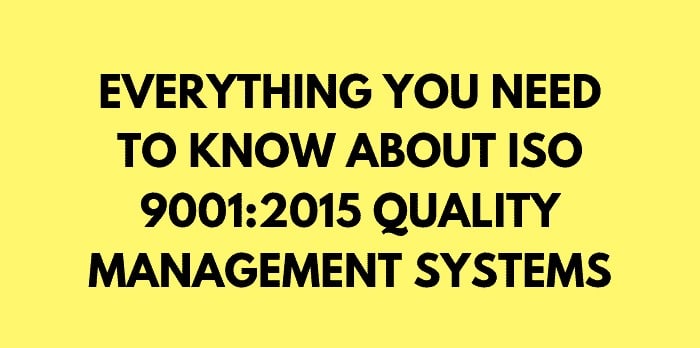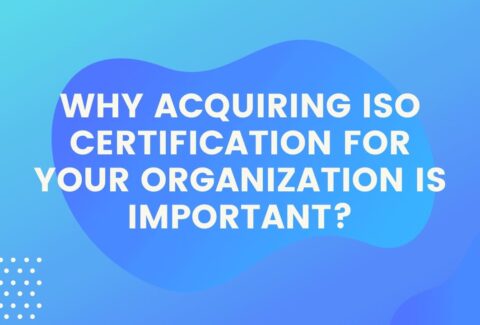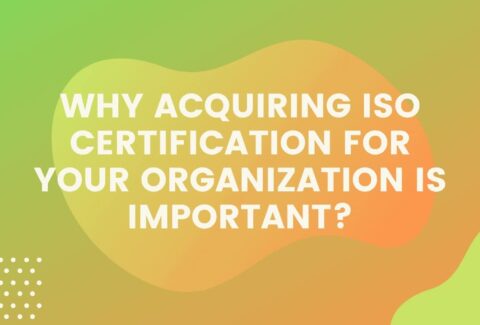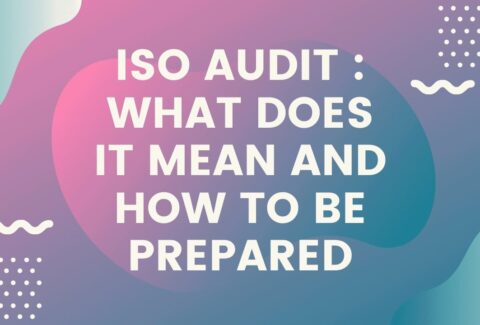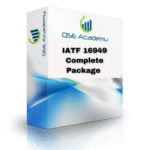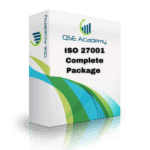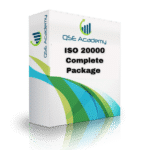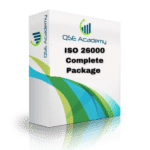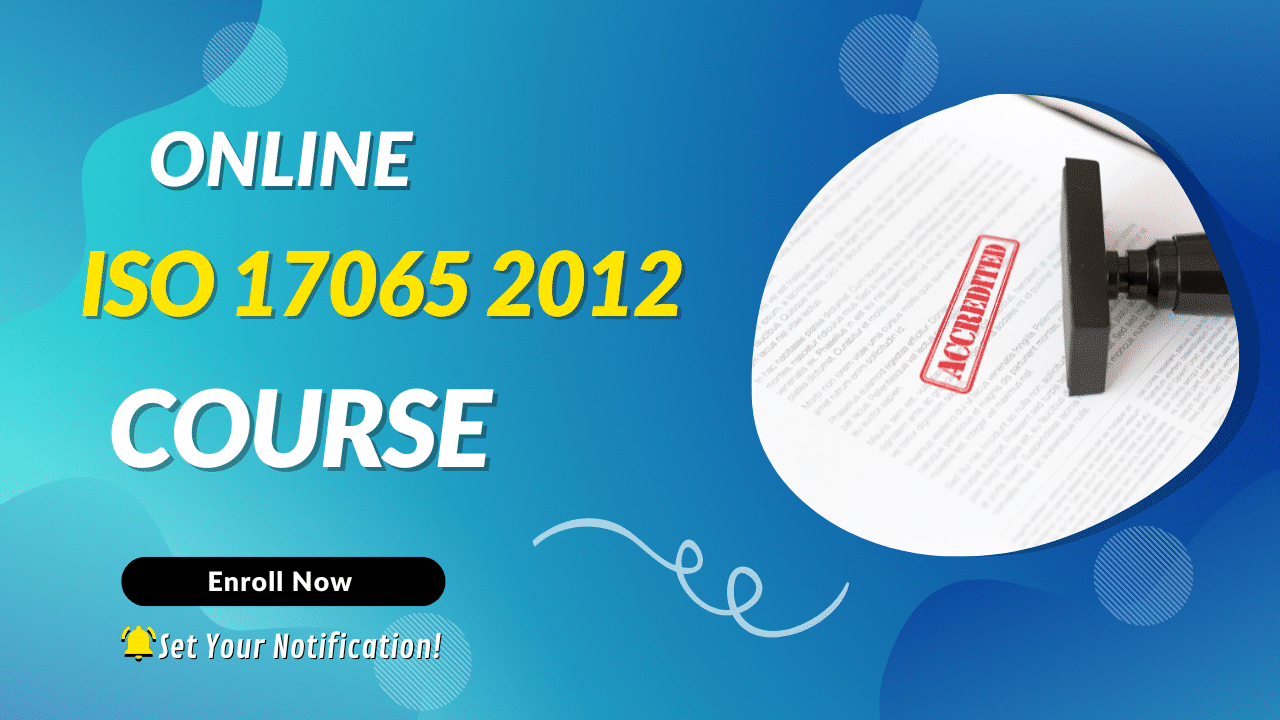Quality Management Systems : Everything You Need to Know
Quality Management Systems : Everything You Need to Know
Have you ever wondered what sets successful businesses apart from the rest? How do they consistently deliver high-quality products or services while keeping customers happy and operations running smoothly? The answer often lies in something called a Quality management system (QMS).
A Quality management system is like a roadmap that helps businesses achieve their goals by focusing on quality, efficiency, and continuous improvement. It’s a structured way to ensure that everything—from how products are made to how customer feedback is handled—follows clear processes designed for success. But don’t worry, this isn’t about creating more paperwork or making life complicated. A good QMS actually simplifies things, helping businesses operate better and meet customer expectations every time.
In this article, we’re going to explore what a Quality management system is, why it’s so important, and how it can benefit businesses of all sizes. Whether you’re just hearing about QMS for the first time or you’re thinking about implementing one, you’re in the right place. Let’s dive into everything you need to know to take your business to the next level!
What Is a Quality Management System?
Let’s start with the basics—what exactly is a Quality management system, and why is it such a big deal for businesses? Think of it as the backbone of your operations. A QMS is a set of policies, processes, and procedures that guide how a business delivers its products or services. It’s like having a playbook that ensures everything runs smoothly, consistently, and with a focus on quality.
Defining a Quality Management System
In simple terms, a Quality management system is all about organizing your business to meet customer expectations while improving efficiency. It provides a framework to:
- Standardize processes, so everyone knows what to do and how to do it.
- Continuously monitor and improve how things are done.
- Keep customers happy by delivering consistent quality every time.
Whether you’re running a small startup or a large organization, a QMS helps you stay on track, reduce errors, and focus on what matters most—delivering value to your customers.
The Core Principles of a Quality Management System
Now, let’s break it down further. A great Quality management system is built on a few key principles that guide how businesses operate. These principles are not just fancy concepts—they’re practical ideas that make a real difference in how things get done.
- Customer Focus
Everything starts and ends with the customer. A QMS ensures that customer needs are front and center in every decision. Happy customers mean repeat business and glowing reviews, which every business wants. - Leadership
Strong leadership is essential for a successful QMS. When leaders set clear goals and priorities, it creates a culture where everyone works toward the same vision. - Process Approach
Instead of tackling tasks randomly, a QMS emphasizes using clear processes to achieve results. It’s all about consistency—getting it right the first time and every time after that. - Continuous Improvement
No business is perfect, but the best ones are always looking for ways to improve. A Quality management system helps you identify what’s working, what’s not, and how to make things better. - Evidence-Based Decision-Making
Decisions based on data are always smarter than those based on guesswork. A QMS encourages businesses to collect and analyze information to make informed choices.
Why Does Every Business Need a QMS?
You might be thinking, “Do I really need a Quality management system?” The answer is a big YES! Without a QMS, it’s easy for things to fall through the cracks. Customers might receive inconsistent products or services, employees may feel unsure about their roles, and opportunities for improvement could be missed entirely.
With a QMS in place, you’re building a solid foundation for success. Whether you’re dealing with customer complaints, trying to cut costs, or scaling your operations, a Quality management system helps you do it all with confidence.
A QMS isn’t just a tool—it’s a mindset. It’s about committing to quality in every part of your business and making it a priority for your entire team. Ready to explore how it can benefit your business even further? Let’s dive into the next section and look at the incredible advantages a QMS can bring!
Why Your Business Needs a Quality Management System
At this point, you might be wondering, “Do I really need a Quality management system for my business?” The short answer: absolutely! Whether you’re running a small local shop or managing a large-scale operation, a QMS is your secret weapon for building consistency, efficiency, and trust. Let’s explore why investing in a Quality management system is one of the smartest moves you can make.
1. Enhanced Customer Satisfaction
Happy customers are the heart of any successful business, and a Quality management system is designed to put them first. By ensuring your processes are tailored to meet customer needs, you’ll consistently deliver high-quality products or services.
For example:
- Imagine an e-commerce business using a QMS to track and improve shipping times. Faster deliveries mean happier customers, better reviews, and more repeat orders.
- A restaurant with a QMS ensures that every dish meets the same high standard, delighting diners every time.
When your customers know they can count on you, they’re more likely to stick around—and even recommend you to others.
2. Streamlined Operations
Think of a QMS as the ultimate organizer for your business. It helps you identify inefficiencies, eliminate waste, and streamline workflows. Instead of scrambling to fix mistakes, you’ll have clear processes that make everything run like clockwork.
For instance:
- A manufacturing company might use a Quality management system to reduce defects and rework, saving both time and money.
- A service-based business can use a QMS to ensure consistent communication with clients, reducing misunderstandings and improving satisfaction.
By working smarter, not harder, your business can save resources and focus on growth.
3. Improved Employee Engagement
A strong Quality management system doesn’t just benefit customers—it also helps your team thrive. When employees have clear processes and know exactly what’s expected of them, they feel more confident and motivated.
Think about it: no one likes working in chaos. A QMS creates structure and clarity, making it easier for your team to succeed. Plus, when they see the positive impact of their work on customer satisfaction and business results, it boosts morale and engagement.
4. Regulatory Compliance Made Simple
Depending on your industry, compliance with regulations and standards might be a big concern. A Quality management system makes this easier by keeping all your documentation, processes, and reporting in order. Whether it’s health and safety requirements, environmental standards, or industry-specific rules, a QMS helps you stay on top of it all.
For example:
- A healthcare provider can use a QMS to ensure compliance with strict patient safety protocols.
- A food manufacturer can rely on their QMS to meet regulatory standards for hygiene and product labeling.
By staying compliant, you reduce the risk of fines, legal issues, or damage to your reputation.
5. Competitive Advantage
In today’s crowded marketplace, standing out can be tough. A Quality management system gives you a clear edge by demonstrating your commitment to excellence. Customers and partners are more likely to choose a business they can trust to consistently deliver quality.
Let’s say you’re bidding on a big contract. Having a well-documented QMS shows potential clients that you’re serious about meeting their standards. Or imagine marketing your products with the promise of a quality guarantee backed by your QMS. It’s a game-changer for building trust and winning new business.
6. Long-Term Growth and Sustainability
A Quality management system isn’t just about short-term wins—it’s about setting your business up for long-term success. By focusing on continuous improvement, a QMS ensures that you’re always adapting, growing, and staying ahead of the competition.
For example:
- A tech startup might use their QMS to streamline product development, allowing them to innovate faster and bring better solutions to market.
- A retail chain can rely on their QMS to maintain consistent standards across all locations as they expand.
When quality is at the core of your business, growth becomes a natural outcome.
Why a Quality Management System Is a Must-Have
A Quality management system isn’t just a tool—it’s a mindset. It helps you deliver consistent results, build trust with customers, and create a strong foundation for growth. Whether you’re aiming to improve efficiency, enhance customer satisfaction, or gain a competitive edge, a QMS is your ultimate ally.
Ready to take your business to the next level? Let’s dive deeper into the key components of a Quality management system and how they work together to drive success. You’re going to love what’s next!
Key Components of a Quality Management System
Now that you know why a Quality management system (QMS) is so important, let’s break it down into its essential parts. Think of these components as the building blocks that make your QMS work smoothly. Each one plays a role in helping your business consistently deliver quality, improve operations, and keep customers happy.
1. Quality Policy and Objectives
At the heart of every Quality management system is a clear quality policy. This is a high-level statement that defines your commitment to quality and sets the tone for your entire organization. It’s like your North Star—it guides your team and helps align everyone with the same goals.
Your quality objectives, on the other hand, are specific, measurable targets that you aim to achieve. For example:
- Reducing product defects by 10% in the next six months.
- Improving customer satisfaction ratings to 95%.
These objectives ensure your QMS has a clear direction and purpose.
2. Documented Processes and Procedures
A well-documented system is the backbone of a strong QMS. This doesn’t mean drowning in paperwork—it’s about creating clear, user-friendly documents that outline how things should be done. These include:
- Standard Operating Procedures (SOPs): Step-by-step guides for tasks like product inspections or order processing.
- Work Instructions: More detailed instructions for specific roles or tasks.
For example, a retailer might document their process for handling customer returns to ensure every case is resolved quickly and fairly. Having these procedures in place ensures consistency, even if team members change.
3. Performance Monitoring and Measurement
A good Quality management system isn’t just about setting goals—it’s about tracking progress and making improvements. Performance monitoring is how you measure whether your processes are working as intended.
Some common tools for this include:
- Key Performance Indicators (KPIs): Metrics like on-time delivery rates or customer complaint resolution times.
- Customer Feedback: Surveys, reviews, and ratings that show how customers perceive your business.
By keeping an eye on these indicators, you can identify areas for improvement and take action before small problems become big ones.
4. Internal Audits
An internal audit is like a regular check-up for your QMS. It’s a way to review your processes, ensure compliance with standards, and find opportunities to improve. Internal audits help you stay on track and demonstrate your commitment to quality.
For example:
- A manufacturing company might conduct quarterly audits to ensure product inspections are being carried out consistently.
- A service provider might review customer service logs to confirm that response times meet their quality standards.
These audits are an essential part of maintaining a strong Quality management system.
5. Nonconformance and Corrective Action
No system is perfect, and sometimes things go wrong. A QMS includes processes for identifying nonconformities (issues that don’t meet quality standards) and taking corrective action to fix them.
For instance:
- If a batch of products doesn’t pass inspection, the QMS ensures they’re removed from circulation, and the root cause is addressed.
- If a customer complaint highlights a recurring issue, corrective action ensures it doesn’t happen again.
This focus on problem-solving and prevention is what makes a Quality management system so effective.
6. Leadership and Employee Involvement
A QMS isn’t just about processes and documents—it’s about people. Leadership plays a crucial role in driving a culture of quality, while employee involvement ensures everyone is committed to the same goals.
For example:
- Leaders can set the tone by emphasizing the importance of quality during team meetings.
- Employees can contribute by sharing ideas for process improvements or highlighting potential issues.
When everyone is engaged, your Quality management system becomes more than just a framework—it becomes part of your company culture.
7. Continuous Improvement
One of the most important components of a QMS is the commitment to continuous improvement. This means always looking for ways to make your processes better, faster, or more efficient.
For example:
- Using customer feedback to refine your products or services.
- Analyzing data to identify trends and make proactive changes.
A Quality management system isn’t static—it evolves with your business, helping you stay competitive and adaptable.
Why These Components Matter
Each of these components works together to create a cohesive, effective QMS. By having a clear quality policy, documented processes, strong leadership, and a focus on improvement, your business is set up for success. Whether you’re solving problems, streamlining workflows, or impressing customers, your Quality management system is there to guide the way.
Ready to take the next step? Let’s look at how you can implement these components to build a QMS that works for your unique business!
How to Implement a Quality Management System
Now that you know the key components of a Quality management system (QMS), you’re probably thinking, “Okay, but how do I actually put this into practice?” Don’t worry—it’s not as overwhelming as it might seem. With a step-by-step approach, you can build and implement a QMS that fits your business and helps you achieve your goals. Let’s dive into the process together!
1. Define Your Quality Goals
The first step in implementing a Quality management system is getting clear on your goals. What do you want to achieve with your QMS? Your goals might include:
- Reducing product defects
- Improving customer satisfaction ratings
- Streamlining internal processes to save time and resources
By defining these objectives, you’ll have a clear focus for your QMS and a way to measure success.
2. Assess Your Current Processes
Before you can improve, you need to understand where you’re starting. Take a close look at your current operations to identify what’s working and where there are gaps.
For example:
- Are your processes consistent, or do things vary depending on who’s handling them?
- Do you have documentation for key tasks, or is everything in someone’s head?
- How often do customer complaints arise, and what’s your process for handling them?
This step, often called a gap analysis, helps you see what needs to change to align with a robust Quality management system.
3. Develop Policies and Procedures
Once you’ve identified gaps, it’s time to create clear, documented processes. This step ensures everyone on your team knows how to do things the right way, every time.
For instance:
- Write standard operating procedures (SOPs) for tasks like quality inspections, order fulfillment, or customer support.
- Develop a quality policy that outlines your commitment to excellence and serves as a guiding principle for your team.
Keep it simple—your documentation doesn’t have to be overly complex. The goal is to make things easy to understand and follow.
4. Train Your Team
Your Quality management system will only succeed if your team is on board. Take the time to train employees on the new processes, explain why quality matters, and show them how their roles contribute to the bigger picture.
For example:
- Train your customer service team on how to handle complaints consistently and professionally.
- Teach your production team how to conduct quality checks at every stage of the process.
By involving your team and addressing their questions, you’ll build buy-in and ensure smooth implementation.
5. Monitor and Measure Performance
A QMS isn’t something you set up and forget—it requires ongoing monitoring to ensure it’s working as intended. Establish key performance indicators (KPIs) to track progress, such as:
- Defect rates
- On-time delivery percentages
- Customer satisfaction scores
Regularly review these metrics to see where you’re excelling and where there’s room for improvement. This step keeps your Quality management system dynamic and effective.
6. Conduct Internal Audits
Internal audits are a crucial part of maintaining your QMS. They allow you to review your processes, identify areas for improvement, and ensure compliance with your quality goals.
For example:
- If your QMS includes a process for resolving customer complaints, an audit can verify whether the steps are being followed consistently.
- If you’ve documented a quality control procedure, an audit can check whether it’s being applied correctly on the production line.
Audits help you stay proactive and ensure your system stays on track.
7. Embrace Continuous Improvement
The beauty of a Quality management system is that it’s built for continuous improvement. Use the insights from your performance monitoring and audits to make incremental changes that enhance your operations over time.
For example:
- If customer feedback shows a recurring issue, tweak your process to address it.
- If a particular step in your workflow is causing delays, brainstorm ways to streamline it.
Continuous improvement isn’t just about fixing problems—it’s about finding opportunities to get even better.
Tips for a Successful QMS Implementation
- Start Small: You don’t have to implement your entire QMS overnight. Focus on one area at a time, like customer service or production, and build from there.
- Get Feedback: Involve your team in the process and ask for their input. They often have valuable insights about what’s working and what’s not.
- Keep It Simple: Avoid overcomplicating your QMS. The simpler and clearer your processes, the easier they’ll be to follow and maintain.
Making Your QMS Work for You
Implementing a Quality management system is an investment in your business’s success. By defining goals, documenting processes, and involving your team, you’re creating a framework that helps you deliver consistent quality and grow with confidence.
The best part? Once your QMS is in place, you’ll see the benefits in every area of your business—from happier customers to smoother operations and stronger team collaboration. Ready to take the leap? Let’s move forward and explore how certifications like ISO 9001 can take your QMS to the next level!
Standards and Certifications Related to Quality Management Systems
When we talk about a Quality management system (QMS), it’s hard not to mention the standards and certifications that help businesses establish credibility and align with best practices. Certifications like ISO 9001 aren’t just buzzwords—they’re tools that can elevate your business by proving your commitment to quality. But what exactly do these certifications mean, and why should you care? Let’s break it down.
1. ISO 9001: The Gold Standard for Quality Management
ISO 9001 is the most widely recognized standard for a Quality management system. It provides a framework that businesses of all sizes and industries can follow to ensure consistent quality and customer satisfaction. But what makes ISO 9001 so special?
- Customer Focus: ISO 9001 emphasizes understanding and meeting customer needs. This principle ensures that your QMS is designed with your customers in mind.
- Process Approach: It promotes efficiency by encouraging businesses to focus on their processes and how they interact.
- Continuous Improvement: ISO 9001 isn’t just about meeting today’s standards—it’s about evolving and getting better over time.
Achieving ISO 9001 certification is like getting a stamp of approval that says, “This business takes quality seriously.”
2. Other Relevant ISO Standards
While ISO 9001 is the go-to standard for most businesses, there are other ISO certifications that might apply to specific industries or goals. Here are a few worth knowing about:
- ISO 14001: Focuses on environmental management systems, helping businesses reduce their environmental impact.
- ISO 45001: Addresses occupational health and safety, ensuring safe working conditions for employees.
- ISO 27001: Deals with information security, making it essential for businesses handling sensitive data.
These certifications can complement your Quality management system, especially if you want to focus on sustainability, safety, or security.
3. The Certification Process
If you’re considering certifying your Quality management system, you might be wondering what the process looks like. Don’t worry—it’s straightforward when broken into steps:
- Preparation: Start by understanding the certification requirements and how they apply to your business. This often involves conducting a gap analysis to see where your current processes stand.
- Implementation: Develop and implement the necessary processes and documentation to meet the standards.
- Internal Audits: Before going for the official certification audit, conduct internal audits to ensure everything is in place.
- Certification Audit: Work with an accredited certification body to review your QMS. If everything meets the standard, you’ll receive your certification!
While it might sound like a lot of work, the benefits—like improved efficiency, customer trust, and a competitive edge—are well worth it.
4. Do You Need Certification?
Here’s the thing: not every business needs to pursue certification. You can still implement a Quality management system and follow the principles of standards like ISO 9001 without going through the formal certification process. However, certification is valuable if you:
- Want to build trust with clients or customers.
- Operate in a competitive industry where certification is a differentiator.
- Need to meet specific client or regulatory requirements.
For example, a construction company might need ISO certification to qualify for certain government contracts, while a small online store might use a QMS without formal certification to streamline operations and improve customer satisfaction.
5. How Certifications Benefit Your QMS
Even if certification isn’t required for your industry, pursuing it can enhance the effectiveness of your Quality management system. Here’s how:
- It provides a clear structure for implementation, helping you avoid guesswork.
- It motivates your team to take quality seriously.
- It opens doors to new business opportunities, partnerships, and markets.
Whether certified or not, aligning your QMS with recognized standards gives you a roadmap for success.
Why Standards and Certifications Matter
In a world where customer expectations are higher than ever, having a well-structured Quality management system is essential. Certifications like ISO 9001 add an extra layer of credibility, showing that your business is committed to doing things the right way.
The great thing about standards and certifications is that they aren’t just for massive corporations—they’re for businesses of all sizes, in all industries. They provide a framework that helps you grow, improve, and deliver consistent quality every step of the way.
If you’re ready to take your QMS to the next level, exploring standards like ISO 9001 could be the perfect place to start. Up next, let’s talk about the exciting trends shaping the future of Quality management systems and how you can stay ahead of the curve!
Trends and the Future of Quality Management Systems
The world of business is constantly evolving, and so are Quality management systems (QMS). What worked a decade ago might not be enough to meet today’s fast-changing demands. To stay ahead, businesses need to adapt their QMS to embrace new trends, technologies, and customer expectations. Let’s explore some of the biggest shifts shaping the future of quality management and how you can prepare your business for what’s next.
1. The Rise of Automation and AI in Quality Management
One of the most exciting trends in Quality management systems is the integration of automation and artificial intelligence (AI). These technologies are transforming the way businesses monitor and improve quality by making processes faster, smarter, and more accurate.
For example:
- Automation: Automating repetitive tasks like data entry, inspection processes, or compliance tracking can save time and reduce human error.
- AI: With AI-driven analytics, businesses can identify patterns in quality data, predict potential issues, and make data-driven decisions faster than ever before.
Imagine a manufacturing company using AI to detect product defects in real-time or a service provider using automation to handle customer inquiries more efficiently. These tools don’t just make life easier—they elevate the effectiveness of your Quality management system.
2. A Focus on Sustainability and Green Practices
Sustainability is no longer just a buzzword—it’s a priority for customers, businesses, and regulators alike. Modern Quality management systems are increasingly being designed to incorporate sustainable practices.
Here’s what that might look like:
- Reducing waste in production processes.
- Sourcing eco-friendly materials or partnering with green suppliers.
- Using energy-efficient tools and technologies to minimize environmental impact.
By integrating sustainability into your QMS, you’re not only contributing to a healthier planet but also aligning with customer values. A commitment to green practices can be a significant competitive advantage in today’s market.
3. Customer-Centric Quality Management
Today’s customers expect more than just a good product—they want exceptional experiences. This shift is pushing businesses to create Quality management systems that focus on customer satisfaction at every touchpoint.
For example:
- Using customer feedback to drive process improvements.
- Implementing systems that track and respond to complaints quickly and effectively.
- Personalizing services to meet individual customer needs.
A customer-centric QMS ensures that your business isn’t just meeting expectations—it’s exceeding them. And in a world where customer loyalty is harder to earn, this approach can make all the difference.
4. Real-Time Data and Analytics
Gone are the days when businesses relied on monthly reports to assess quality. Thanks to advancements in technology, real-time data is becoming a cornerstone of modern Quality management systems.
With real-time dashboards and analytics tools, you can:
- Monitor quality metrics as they happen.
- Identify issues immediately and take corrective action before they escalate.
- Gain deeper insights into trends and performance over time.
This level of visibility makes your QMS more dynamic and responsive, helping you stay ahead in a fast-paced business environment.
5. Integration with Other Management Systems
As businesses grow more complex, it’s becoming increasingly important to integrate different management systems. Modern Quality management systems are being designed to work seamlessly with systems for:
- Environmental management (ISO 14001).
- Health and safety management (ISO 45001).
- Information security (ISO 27001).
By creating an integrated management system, you can streamline operations, reduce redundancies, and ensure consistency across all areas of your business.
6. Remote and Digital Workforces
The rise of remote work has changed the way businesses operate, and Quality management systems need to keep up. Digital tools are now essential for maintaining quality across distributed teams.
For example:
- Cloud-based QMS platforms allow employees to access processes and documentation from anywhere.
- Virtual training programs help keep teams aligned on quality goals, even when working remotely.
- Collaborative tools like project management software ensure that quality initiatives stay on track.
By embracing digital solutions, you can ensure your QMS remains effective in today’s flexible work environment.
Why Staying Ahead of Trends Matters
Adapting to these trends isn’t just about keeping up—it’s about staying competitive, meeting customer expectations, and positioning your business for long-term success. A modern Quality management system is more than just a tool for compliance—it’s a strategy for growth and innovation.
The key takeaway? A QMS isn’t static. It evolves with your business, your customers, and the world around you. By staying informed about trends and embracing new technologies, you’ll ensure your system continues to drive quality and success for years to come.
Ready to future-proof your business? Let’s wrap up by recapping everything you need to know about implementing and maintaining an effective Quality management system!
Why a Quality Management System Is Essential for Business Growth
If you’ve made it this far, it’s probably clear that a Quality management system (QMS) is more than just a buzzword—it’s a tool that can transform your business. But let’s dig deeper into why it’s essential for long-term growth and success. Whether you’re running a small startup or managing a global enterprise, a QMS isn’t just a nice-to-have—it’s a must-have. Let’s talk about why.
1. Consistency Builds Trust
Imagine ordering from a business and receiving a different level of quality every time. Frustrating, right? A Quality management system eliminates that inconsistency by creating standardized processes that ensure your products or services are reliable and consistent.
For example:
- A food delivery service can use a QMS to ensure every order is accurate, fresh, and delivered on time.
- A clothing brand can rely on a QMS to maintain the same high quality across all their product lines.
When customers know they can count on you, trust grows—and trust is the foundation of any successful business.
2. Drives Efficiency and Reduces Costs
Running a business isn’t just about making money—it’s also about using resources wisely. A Quality management system helps you identify inefficiencies, eliminate waste, and streamline your operations.
Here’s how:
- It standardizes workflows, reducing errors and saving time.
- It minimizes defects, so you spend less on rework or replacements.
- It improves supply chain management, ensuring you’re not overstocking or understocking.
The result? A leaner, more efficient operation that not only saves money but also delivers better results for your customers.
3. Boosts Employee Engagement
Employees thrive when they know what’s expected of them and have the tools to succeed. A Quality management system provides that clarity by defining roles, responsibilities, and processes.
For instance:
- Team members have access to clear guidelines for their tasks, which reduces confusion and boosts confidence.
- Regular feedback loops (a key part of a QMS) allow employees to share their ideas and feel more involved in the business’s success.
Engaged employees are more productive, more innovative, and more likely to stick around—making your business stronger in the long run.
4. Enhances Customer Satisfaction
Happy customers are loyal customers, and a Quality management system is designed to keep them coming back. By focusing on quality at every stage, you can ensure that your products or services consistently meet—or exceed—expectations.
For example:
- A tech company might use a QMS to ensure every software update is bug-free and delivers real value to users.
- A hospitality business could use a QMS to train staff on creating memorable guest experiences.
When customers feel valued and satisfied, they’re more likely to leave positive reviews, recommend your business, and become repeat buyers.
5. Prepares Your Business for Growth
As your business expands, managing quality becomes more complex. A Quality management system provides the structure you need to scale without sacrificing standards.
For example:
- If you’re opening new locations or entering new markets, your QMS ensures that every customer experiences the same level of quality.
- If you’re launching new products, your QMS guides you through testing, development, and feedback processes to ensure success.
With a QMS in place, you’re not just reacting to growth—you’re planning for it.
Every industry faces its own unique challenges, from shifting regulations to changing customer preferences. A Quality management system equips you to adapt and thrive in the face of uncertainty.
For instance:
- In a heavily regulated industry like healthcare, a QMS ensures compliance with standards while maintaining quality care.
- In fast-moving industries like e-commerce, a QMS helps you stay agile by monitoring trends and making improvements quickly.
By building flexibility and resilience into your operations, your QMS becomes a powerful tool for navigating challenges.
7. Strengthens Your Competitive Edge
In today’s crowded marketplace, businesses need every advantage they can get. A Quality management system gives you a clear edge by proving your commitment to excellence. Customers, clients, and partners notice when a business takes quality seriously—and that can make all the difference.
For example:
- Highlighting your QMS in marketing materials can reassure potential customers and set you apart from competitors.
- Showing that your business meets recognized quality standards can attract larger clients or help you win bids.
Quality isn’t just about meeting expectations—it’s about exceeding them, and a QMS makes that possible.
Final Thoughts: Why a QMS Is a Smart Investment
A Quality management system is more than just a way to improve processes—it’s a strategic investment in your business’s future. It helps you build trust, drive efficiency, engage employees, and grow sustainably, all while keeping customers at the heart of everything you do.
Whether you’re just starting your business journey or looking for ways to take things to the next level, implementing a QMS is a step in the right direction. It’s not just about what you achieve today—it’s about setting the stage for long-term success. Ready to embrace quality and unlock your business’s potential? Let’s make it happen!
Let’s make ISO less about stress and more about success! 🙏
make ISO standards less intimidating and more approachable for everyone.
Whether it’s ISO 9001, ISO 22000, or the cosmetics-focused ISO 22716,
I’ve spent my career turning complex jargon into clear, actionable steps
that businesses can actually use. I’m not here to call myself an expert—I prefer “enthusiast” because I truly love what I do.
There’s something incredibly rewarding about helping people navigate food safety and quality management systems
in a way that feels simple, practical, and even enjoyable.
When I’m not writing about standards, you’ll probably find me playing Piano 🎹, connecting with people, or diving into my next big project💫.

